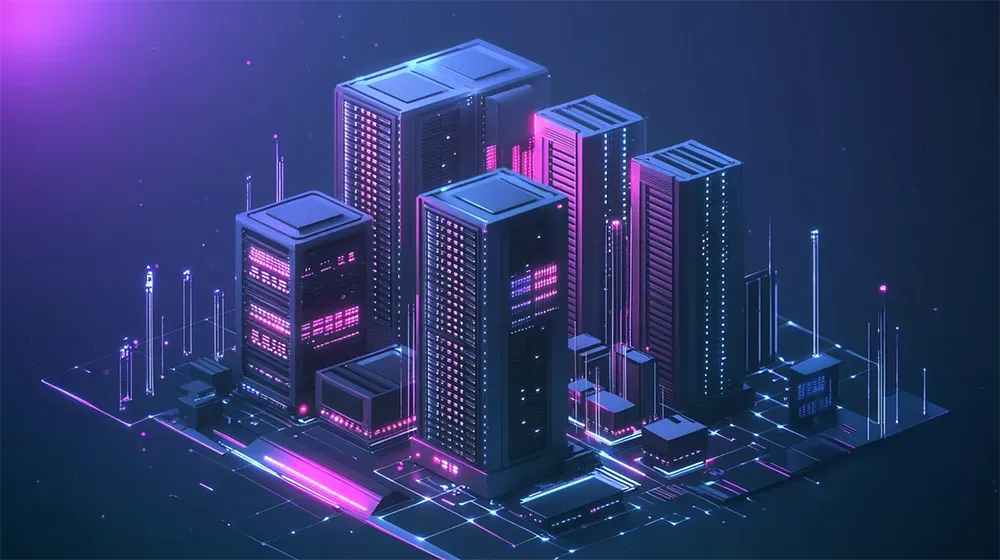Understanding Computer Vision with a Futurist Keynote Speaker's Help

Understanding Computer Vision with a Futurist Keynote Speaker's Help
Computer vision is a fascinating field that has the potential to revolutionize the way we interact with technology and the world around us. But for many people, it can be a complex and intimidating topic. That's where a futurist keynote speaker can make all the difference. By providing insights, explanations, and real-world examples, they can help us grasp the intricacies of computer vision and its far-reaching implications.
Exploring the Concept of Computer Vision
To truly understand computer vision, we need to start with the basics. At its core, computer vision is the branch of artificial intelligence that focuses on enabling computers to interpret and understand visual information, just like humans do. It involves the development of algorithms and models that allow computers to analyze images and videos, extract relevant data, and make informed decisions based on what they "see."
Computer vision has applications in various domains, including autonomous vehicles, healthcare, robotics, surveillance, and more. It involves complex tasks such as object recognition, image segmentation, facial recognition, and even human pose estimation. The goal is to equip machines with the ability to perceive and interpret the visual world with accuracy and efficiency.
One fascinating aspect of computer vision is its ability to enable autonomous vehicles. Imagine a world where cars can navigate through busy streets, interpret traffic signs, and detect pedestrians with precision. Computer vision algorithms can analyze real-time video feeds from cameras mounted on vehicles, allowing them to make split-second decisions to ensure the safety of passengers and pedestrians.
In the field of healthcare, computer vision plays a crucial role in medical imaging. It enables doctors to accurately diagnose diseases by analyzing X-rays, CT scans, and MRIs. By leveraging computer vision techniques, medical professionals can detect abnormalities, tumors, and other medical conditions that may not be easily visible to the naked eye. This technology has the potential to revolutionize the way we approach healthcare, leading to earlier detection and more effective treatments.
Robotics is another domain where computer vision is making significant advancements. Robots equipped with computer vision capabilities can perceive and understand their surroundings, allowing them to perform complex tasks in industrial settings. For example, robots can use computer vision to identify and sort objects on an assembly line, improving efficiency and productivity. Additionally, computer vision enables robots to interact with humans in a more intuitive and natural way, opening up possibilities for collaboration in various industries.
Surveillance is yet another area where computer vision is transforming the way we monitor and secure our surroundings. By analyzing video footage in real-time, computer vision algorithms can detect suspicious activities, identify individuals, and track objects of interest. This technology has become a crucial tool in law enforcement, helping to prevent crimes and enhance public safety.
Computer vision also plays a significant role in the field of augmented reality (AR) and virtual reality (VR). By combining computer vision with other technologies such as depth sensing and motion tracking, immersive experiences can be created. For example, computer vision can be used to track the movement of a user's hands in VR, allowing them to interact with virtual objects in a more natural and intuitive way.
As computer vision continues to advance, the possibilities are endless. From improving the accuracy of facial recognition systems to enabling drones to navigate through complex environments, this field holds immense potential for transforming various industries and enhancing our daily lives. With ongoing research and development, we can expect computer vision to become even more sophisticated and integrated into our everyday technology.
The Role of a Futurist Keynote Speaker in Interpreting Computer Vision
Now, you might be wondering, what does a futurist keynote speaker have to do with computer vision? The answer lies in their unique ability to bridge the gap between complex concepts and everyday understanding. A futurist keynote speaker not only has a deep understanding of computer vision but also possesses the communication skills to make it accessible to a broader audience.
Computer vision, a subfield of artificial intelligence, focuses on enabling computers to interpret and understand visual information from images or videos. It involves the development of algorithms and models that can analyze and extract meaningful insights from visual data. This technology has numerous applications across various industries, including healthcare, retail, transportation, and entertainment.
Through engaging presentations and thought-provoking discussions, a futurist keynote speaker can break down complex theories and technical jargon into digestible insights. They can illustrate the practical applications of computer vision in a way that resonates with individuals from diverse backgrounds and industries. By sharing real-world examples and success stories, they can showcase how computer vision is revolutionizing different sectors.
For instance, in the healthcare industry, computer vision technology is being used to assist in the early detection of diseases, such as cancer. By analyzing medical images, algorithms can identify patterns and anomalies that may indicate the presence of a tumor or other abnormalities. This early detection can significantly improve patient outcomes and potentially save lives.
In the retail sector, computer vision is transforming the way consumers shop. With the help of image recognition algorithms, retailers can provide personalized recommendations based on a customer's preferences and previous purchases. This technology can also be used to optimize store layouts and inventory management, enhancing the overall shopping experience.
Furthermore, computer vision has the potential to revolutionize transportation systems. Autonomous vehicles rely heavily on computer vision algorithms to perceive and understand their surroundings. By interpreting data from cameras and sensors, these vehicles can navigate through traffic, detect obstacles, and make informed decisions in real-time. Futurist keynote speakers can delve into these advancements, highlighting the impact they will have on transportation safety and efficiency.
Essentially, futurist keynote speakers act as a translator, making the seemingly abstract world of computer vision tangible and relatable. They bridge the gap between technical experts and the general public, fostering a deeper understanding and appreciation for this cutting-edge technology. By presenting computer vision in a way that is accessible and engaging, they inspire individuals to embrace innovation and explore the endless possibilities that lie ahead.
The Impact of Computer Vision on Different Industries
Computer vision has the potential to revolutionize a wide range of industries, and its impact is already being felt. In the healthcare sector, computer vision enables faster and more accurate diagnostics, leading to improved patient outcomes. Imagine a future where machines can detect early signs of diseases from medical images, assisting doctors in making timely and precise diagnoses.
In addition to diagnostics, computer vision is also being used in surgical procedures. Surgeons can now rely on computer vision systems to guide them during complex surgeries, providing real-time feedback and enhancing precision. This technology has the potential to reduce the risk of errors and complications, ultimately improving patient safety and recovery.
In the automotive realm, computer vision plays a central role in the development of autonomous vehicles. These vehicles rely on computer vision algorithms to perceive and understand the surrounding environment, making split-second decisions to ensure passenger safety. With the help of computer vision, we are inching closer to a future where self-driving cars are the norm, revolutionizing transportation as we know it.
Moreover, computer vision is not limited to just autonomous vehicles. It is also being used in traffic management systems to monitor and analyze traffic patterns, optimize traffic flow, and enhance road safety. By accurately detecting and tracking vehicles, computer vision can help reduce congestion, minimize accidents, and improve overall transportation efficiency.
Computer vision is also transforming the retail industry. With advanced image recognition capabilities, retailers can analyze customer behavior, detect emotions, and personalize shopping experiences. Imagine walking into a store where the shelves automatically adjust to your preferences and needs, based on real-time analysis of your facial expressions and body language.
Furthermore, computer vision is revolutionizing the way inventory management is done in retail. By using computer vision systems, retailers can automate the process of stock counting and monitoring, reducing human error and improving inventory accuracy. This not only saves time and resources but also enables retailers to make data-driven decisions, ensuring that popular products are always in stock and minimizing the risk of overstocking or understocking.
Computer vision is also making its mark in the field of agriculture. By analyzing images captured by drones or satellites, computer vision can help farmers monitor crop health, detect diseases or pests, and optimize irrigation and fertilizer usage. This technology enables farmers to make informed decisions, increase crop yields, and minimize the environmental impact of farming practices.
Lastly, computer vision is being utilized in the field of security and surveillance. By analyzing video footage in real-time, computer vision systems can detect and track suspicious activities, identify individuals, and enhance overall security measures. This technology has the potential to prevent crimes, improve public safety, and aid law enforcement agencies in their investigations.
How a Futurist Keynote Speaker Makes Computer Vision Understandable for All
One of the biggest challenges of computer vision is making it accessible to a wide audience. Here's where a futurist keynote speaker shines. By combining their expertise in computer vision with their storytelling skills, they can bring the technology to life and make it relatable for everyone.
A futurist keynote speaker will help you envision a future where computer vision is integrated seamlessly into our everyday lives. They will showcase inspiring examples of how computer vision is already being used across various industries, emphasizing the positive impact it can have on society. For instance, imagine a world where computer vision technology is employed in healthcare to detect early signs of diseases, enabling timely interventions and potentially saving countless lives.
Moreover, a futurist keynote speaker will delve into the societal implications, ethical considerations, and potential challenges of widespread adoption. They will explore how computer vision can revolutionize transportation systems, making them safer and more efficient. Picture a future where self-driving cars equipped with advanced computer vision algorithms navigate the roads, reducing accidents and congestion. However, they will also address concerns about privacy and data security, ensuring a well-rounded understanding of the field.
Furthermore, a futurist keynote speaker will captivate the audience by sharing fascinating insights into the cutting-edge research and development happening in the field of computer vision. They will discuss breakthroughs in object recognition, image classification, and facial recognition, highlighting the incredible progress made in recent years. They will also shed light on the challenges that researchers face, such as developing algorithms that can accurately interpret complex scenes and handle real-time processing.
In addition to the technical aspects, a futurist keynote speaker will weave engaging narratives around the human impact of computer vision. They will share stories of individuals whose lives have been transformed by this technology, such as visually impaired individuals who can now navigate the world more independently with the help of computer vision-powered assistive devices. These personal anecdotes will resonate with the audience, making the topic more relatable and inspiring.
Overall, a futurist keynote speaker has the unique ability to make computer vision understandable for all. Through their expertise, storytelling skills, and captivating examples, they can demystify complex concepts and ignite curiosity in the audience. Whether it's in the context of healthcare, transportation, or personal empowerment, computer vision has the potential to shape our future in profound ways, and a futurist keynote speaker ensures that everyone can envision and participate in this transformative journey.
The Future Possibilities of Computer Vision
As technology continues to advance, so does the potential of computer vision. The future possibilities are both exciting and awe-inspiring. From augmented reality experiences that blend seamlessly with the real world to advanced medical imaging techniques that can detect even the subtlest abnormalities, computer vision holds the key to a future where our interactions with technology reach new heights.
With the guidance of a futurist keynote speaker, we can navigate this transformative landscape with confidence. They will equip us with the knowledge and insights to adapt and leverage the power of computer vision in our personal and professional lives. So, embrace the future with open arms, as a futurist keynote speaker helps us understand the incredible potential of computer vision.
FAQ
What is computer vision?
Computer vision is a branch of artificial intelligence that focuses on enabling computers to interpret and understand visual information, similar to how humans do. It involves the development of algorithms and models that allow computers to analyze images and videos, extract relevant data, and make informed decisions based on what they "see."
How is computer vision being applied in different industries?
Computer vision has applications in various domains, including autonomous vehicles, healthcare, robotics, surveillance, and more. It is used for tasks such as object recognition, image segmentation, facial recognition, and human pose estimation. It enables autonomous vehicles to navigate safely, assists doctors in medical imaging for accurate diagnoses, improves efficiency in industrial robotics, enhances security and surveillance, and creates immersive experiences in augmented and virtual reality.
What role does a futurist keynote speaker play in understanding computer vision?
A futurist keynote speaker has the expertise to bridge the gap between complex concepts and everyday understanding. They can explain computer vision in accessible terms, provide real-world examples, and showcase the implications and potential of the technology. They help individuals from diverse backgrounds and industries grasp the intricacies of computer vision and inspire them to embrace innovation and explore its possibilities.
Contact a Futurist Keynote Speaker for your event
Ready to delve deeper into the fascinating world of computer vision? Dr Mark van Rijmenam, a renowned futurist keynote speaker, is here to guide you through this transformative journey. With his profound understanding of computer vision and its far-reaching implications, he can make this complex topic accessible and engaging for everyone. Whether you're in healthcare, retail, transportation, or entertainment, his insights can inspire you to embrace innovation and explore the endless possibilities that lie ahead. Don't miss out on this incredible opportunity to learn from a leading expert in the field. Complete the form below, and we will be in touch within 24 hours to discuss how Dr Mark van Rijmenam can make your next event a memorable one.





